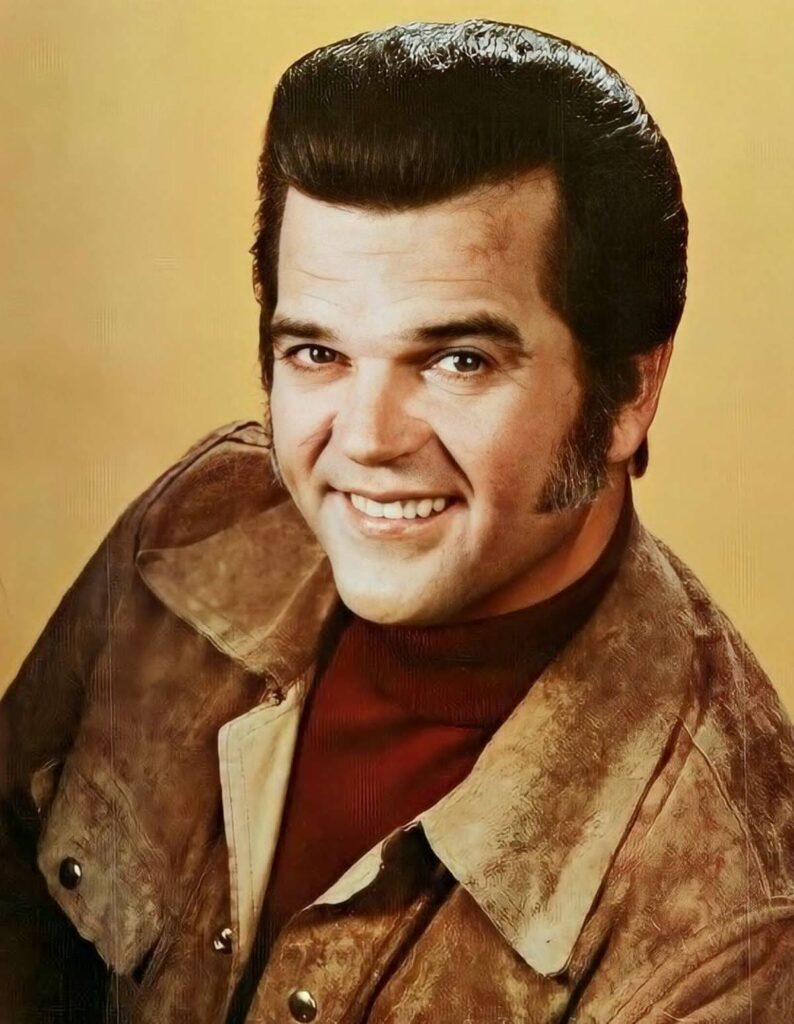
A Soul Losing Its Mirror
When I Can’t See Me Without You unfolded in November 1971, Conway Twitty released it as the lead single and title‑track from his album I Can’t See Me Without You. The song climbed to No. 4 on the Billboard Hot Country Singles chart in the United States and reached No. 1 on Canada’s RPM Country Tracks chart.
From those facts, one senses its immediate impact—Twitty’s voice capturing an ache of absence and identity, appealing across borders and resonating with listeners who recognised the fear of losing oneself when separation comes.
In the quiet space where a man glimpses his reflected self and realises the other half is gone, Twitty speaks. He penned “I Can’t See Me Without You,” a rare instance where the performer also authorises the sentiment, embedding his own voice into the heart of its narrative. The timing is notable. In the early 1970s, Twitty was already firmly established in country music, yet this track harkens to a deeper vulnerability than the bravado of many of his earlier hits.
The lyric invites the listener into a world where presence defines self‑perception: the “I” only finds meaning alongside the “you.” The musical phrasing—a gentle sway of melody, a hint of longing in the vocal delivery—supports that yearning. Twitty’s phrasing lingers on the “without you” as though the world, stripped of its companion, tilts off its axis. In that moment the listener recognises a dual tragedy: losing the partner and losing the reflection.
The album of the same name, released in 1972, positions the song as the thematic core around which the other tracks orbit. One can imagine Twitty, with producer Owen Bradley, and his band in Nashville, crafting not just a tune but an emotional landscape—strings or subtle steel guitar shading the borders of a song that is more confession than performance.
What makes the song enduring is its universality and craft. It is not merely about lost love, but about identity unravelled when the anchor is gone. Fans have remarked at Twitty’s vocal tone—a softness that contrasts with his rougher edges—capturing a man exposed and uncertain. On stage or record, the delivery isn’t a shout of heartbreak; it’s the quiet realisation: “I can’t see me … without you.” The simplicity of the phrasing belies the complexity of the emotion.
Culturally, the track sits at a junction. Twitty, known for his slate of country‑hits that oscillated between honky‑tonk and ballad, here contributes to the tradition of the country “loss song” but does so without melodrama. He offers solace: if you have ever felt you needed the other to see yourself, you find your confession in this song. The fact it resonated enough to chart highly in both the U.S. and Canada illustrates that longing crosses borders.
In the story of Conway Twitty’s career, “I Can’t See Me Without You” stands as a turning point—a mature ballad that allowed the rough‑hewn voice and seasoned singer to inhabit tenderness without losing command. It reminds us that even the strongest reflectors sometimes smash, and a man must learn to find his face again. In this light, the song remains a tender gift from Twitty: a moment of confession, of vulnerability, and of the quiet power in acknowledging that some part of ourselves lives only through the presence of another.